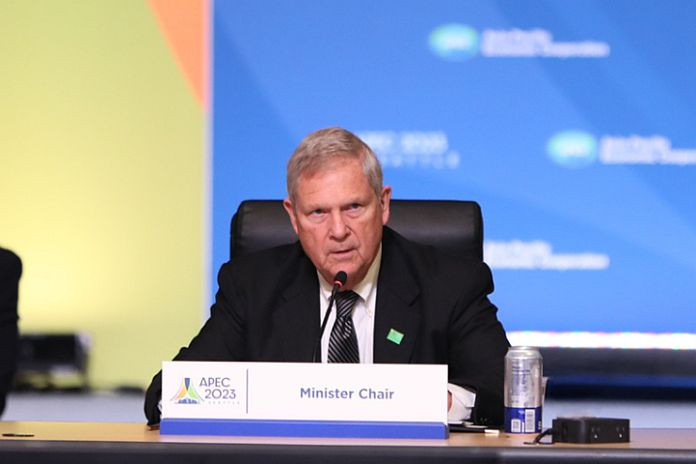By 8th APEC Food Security Ministerial Meeting
SEATTLE, USA – As food insecurity grows globally due to the rising costs, conflicts and climate change that disrupt production and supply chains, APEC member economies seek to increase agricultural productivity through innovative technology and sustainable practices.
The number of people going hungry has been gradually rising since 2015. In 2022, food insecurity increased significantly with around 735 million people facing hunger around the world, or 122 million more people than in 2019, before the pandemic.
Agriculture and food ministers around the Asia-Pacific region convened in Seattle on Thursday to step-up measures that will feed an increasing population with limited resources due to the challenges posed by a changing climate.
“It is important to recognize that food and nutrition security requires food be simultaneously available, accessible, stable, as well as affordable,” said Thomas Vilsack, the United States secretary of agriculture, as he addressed his counterparts at the opening of the 8th APEC Food Security Ministerial Meeting in Seattle on Thursday, “constrictions within any of these components can result in food and nutrition insecurity. ”
“Increasing agricultural productivity is also essential to meeting the needs of a growing global population,” said secretary Vilsack who is the chair of the meeting. “In order to produce more, while minimizing environmental impacts, we must leverage innovation and foster new ways of doing things.”
“Only by leveraging innovation and science, including biotechnology, can we provide our farmers, fishers, foresters and other producers with the tools they need to improve productivity, sustainability and resilience.”
Secretary Vilsack highlighted that these technological advances must be made accessible to producers of all sizes and types in all parts of the world. ”Open markets and science-driven regulatory regimes are also critical to innovative new technologies being available.”
Secretary Vilsack stressed that climate change adaptation and mitigation, and sustainable agricultural productivity growth are also inextricably linked to food and nutrition security further underscoring the critical role innovation plays in the future to address these challenges.
“Accelerating agricultural productivity growth to reduce agriculture’s environmental footprint and reducing greenhouse gas emissions from agriculture is also imperative,” secretary Vilsack noted. “Without agricultural productivity growth, meeting the world’s current and future food needs would require increased use of natural resources, including the expansion of agriculture into forests and other critical ecosystems.”
“Such an expansion would threaten our ability to meet GHG emissions reduction goals, even if other human activities were dramatically curtailed. The consequences of failing to accelerate agricultural productivity growth could be dire.”
He explained that changes to the agricultural and food systems can only happen at the needed scale and speed if farmers and other rural stakeholders reap the benefits of sustainable climate-smart policies and practices as they strive to maximize their productivity and profitability.
“The time is [in fact] now, and together we can achieve sustainable, equitable and resilient agri-food systems, which is the premise of our agriculture theme for this host year,” secretary Vilsack concluded.





